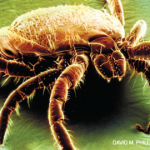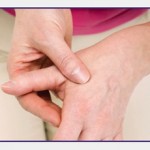Lyme disease is an infection caused by the transmission of Borrelia burgdorferi bacteria living inside infected ticks, which enters a person’s body when he or she is bitten by the tick. These small ticks can go unnoticed, attaching to the skin and feeding for several days before dislodging.
In Lyme disease’s early-localized stage, a skin rash appears at the location of the tick bite from three days to several weeks after the bite. The rash starts as a small red mark and gradually grows in width to at least two inches. In approximately 20% of cases, the infection can attack the nervous system, causing severe headache and stiff neck, paralysis of the muscles of the face, or painful inflammation of nerves. If the infection reaches the heart, as it does in about 5% of cases at this stage, the heart beat may abnormally (known as heart block). Other individuals will have no symptoms at all. Late-stage infection may occur months or even years after the bite. At this stage, the infection can affect the joints (Lyme arthritis), causing swelling of one or both knees.
In the U.S., Lyme disease occurs mostly in the Northeast and Middle Atlantic States from Virginia northward, the upper Midwest, and, to a lesser degree, in Northern California and the Pacific Northwest region. According to patient fact sheet writer, Robert Kalish, MD, “[The] people most at risk are those who spend time outdoors in rural or suburban sections of these regions.” More infections occur in the late spring and early summer months when the tiny (poppy-seed sized) nymphal form of the tick is feeding. The risk of tick bites is lower during the late summer after the nymphal ticks have become inactive, and in the winter when cold and snowfall make the adult ticks temporarily dormant.
To optimize diagnostic accuracy, the Centers for Disease Control has recommended a two-step approach that uses an ELISA blood test to look for evidence of particular antibodies in the immune system’s response to the infection followed by a second test (Western blot) to confirm borderline or positive results. In certain circumstances, a person who does not have Lyme disease may have a false positive on a blood test, or someone who has Lyme disease may register a false negative (this occurs commonly in the early weeks of the infection or more rarely later). Therefore, lab testing should be used only when patients show possible symptoms of the disease.



